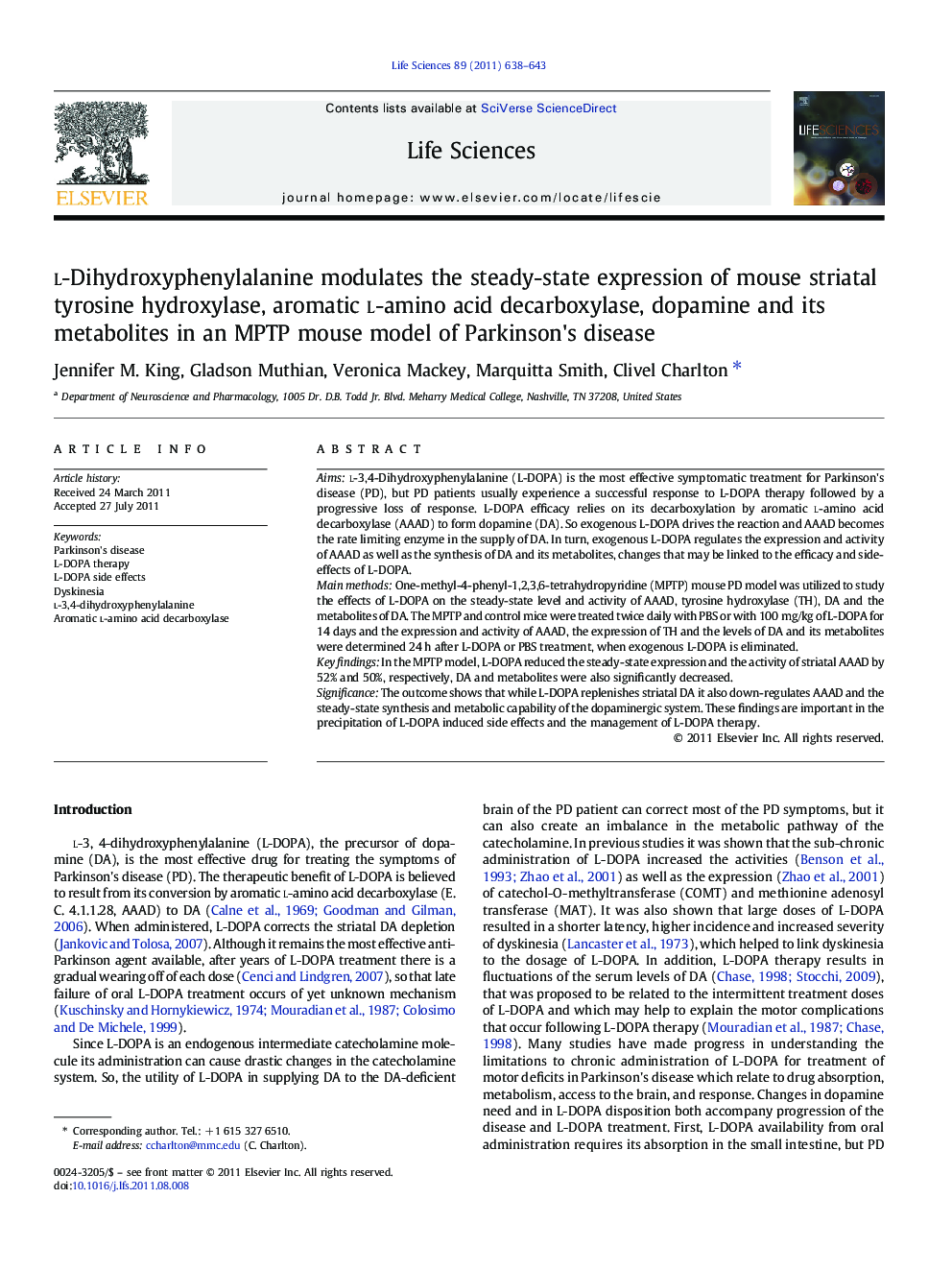| Article ID | Journal | Published Year | Pages | File Type |
|---|---|---|---|---|
| 5842933 | Life Sciences | 2011 | 6 Pages |
Aimsl-3,4-Dihydroxyphenylalanine (L-DOPA) is the most effective symptomatic treatment for Parkinson's disease (PD), but PD patients usually experience a successful response to L-DOPA therapy followed by a progressive loss of response. L-DOPA efficacy relies on its decarboxylation by aromatic l-amino acid decarboxylase (AAAD) to form dopamine (DA). So exogenous L-DOPA drives the reaction and AAAD becomes the rate limiting enzyme in the supply of DA. In turn, exogenous L-DOPA regulates the expression and activity of AAAD as well as the synthesis of DA and its metabolites, changes that may be linked to the efficacy and side-effects of L-DOPA.Main methodsOne-methyl-4-phenyl-1,2,3,6-tetrahydropyridine (MPTP) mouse PD model was utilized to study the effects of L-DOPA on the steady-state level and activity of AAAD, tyrosine hydroxylase (TH), DA and the metabolites of DA. The MPTP and control mice were treated twice daily with PBS or with 100Â mg/kg of L-DOPA for 14Â days and the expression and activity of AAAD, the expression of TH and the levels of DA and its metabolites were determined 24Â h after L-DOPA or PBS treatment, when exogenous L-DOPA is eliminated.Key findingsIn the MPTP model, L-DOPA reduced the steady-state expression and the activity of striatal AAAD by 52% and 50%, respectively, DA and metabolites were also significantly decreased.SignificanceThe outcome shows that while L-DOPA replenishes striatal DA it also down-regulates AAAD and the steady-state synthesis and metabolic capability of the dopaminergic system. These findings are important in the precipitation of L-DOPA induced side effects and the management of L-DOPA therapy.
